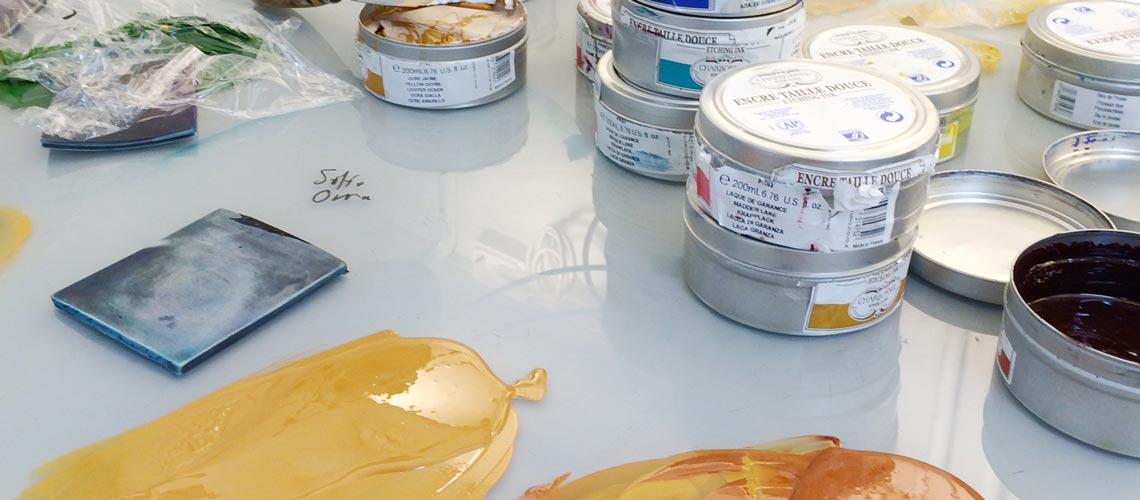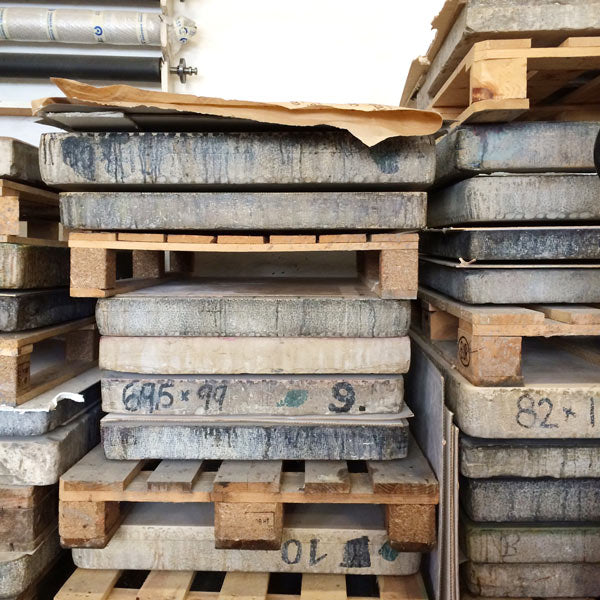How the prints are created
Relief printing: Ink sticks to the raised areas
Intaglio printing: Ink sticks to the depths
Etching - acid bites into the copper plate
Etchings get the name from etching with acids in a plate. First, the plate is covered by an acid-resistant ground. Subsequently the artist removes the ground in the places where he or she wants the acid to bite. This can be done with a plethora of different ingenious tools that give their own kind of expression. "Hard ground" means that the plate is treated with a mixture of wax, resin and asphalt, and then scraped away to bare the metal plate in the places where the artist wants the ink to adhere.
Aquatint etching - asphalt powder creates tones
In a regular etching, the artist draws lines that are etched into a plate. To create shading, the artist can, for example, make many lines close together. Aquatint expands the possibilities of the etching technique - by laying a grid of grains on the plate, the artist can create shades of grey over larger areas of the print.
Drypoint - a sharp needle as the only tool
Drypoint is another type of intaglio print. The artist uses a sharp needle to scrape the image in the surface of the plate. When the plate is coated with ink, it will stick to the tracks that the needle has left but also to the small traces of metal formed around the cuts, called the ”burr". This creates one of drypoint's characteristics, the softness of the lines.
Planographic print: inked and non-inked areas on a plane surface
Lithography - fat repels water
Lithography is the most common planographic printing method. Lito means stone in Greek, and lithographies are still today sometimes printed with stones. However, they have mostly been replaced by aluminum plates. The method is based on the fact that oil and water does not mix. When the printing ink is applied to the stone or plate, it will only adhere to the parts where the artist's motif has been fixed.
Stencil printing: ink is pushed through a cut-out
Serigraphy or silkscreen
Screen printing or silkscreen printing, called serigraphy when it comes to art prints, is the most common method. A mesh, traditionally made of silk but these days often made from synthetic material, is stretched on a frame. Stencils cover the part of the fabric that should not be letting ink through. Today stencils can be prepared photographically, which gives extremely precise results
Digital prints
Cyanotype
Iron salts create the dark blue tone
The classic architectural blueprints are created using this process where paper is treated with ferric salts that are UV sensitive. When they are exposed to UV light and developed in water, the blue color appears on the paper. The parts of the paper that have been protected from UV light retain the white color of the paper.



